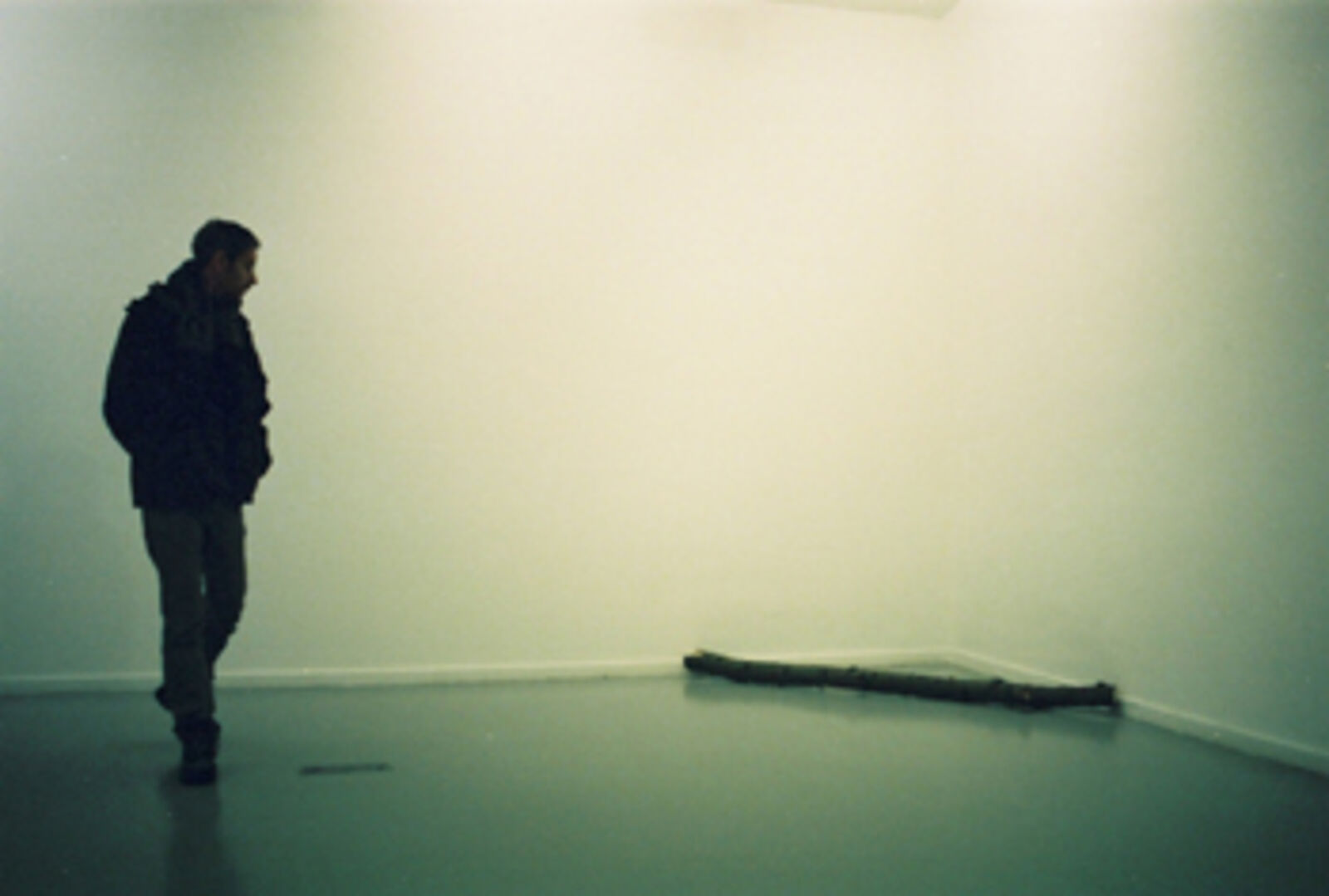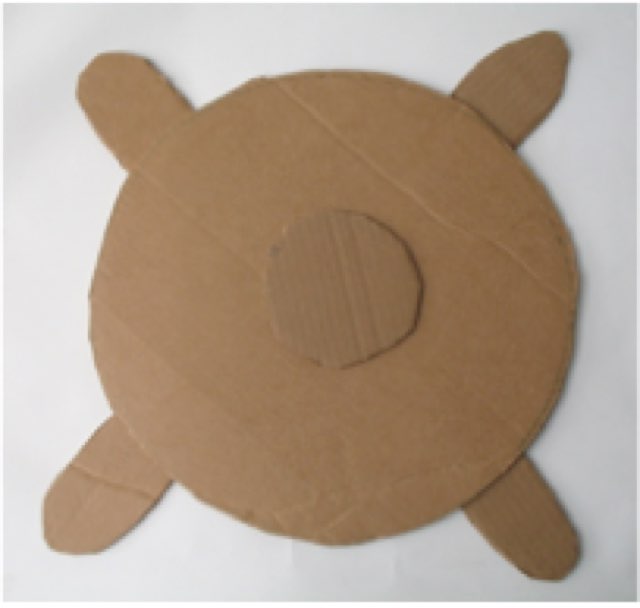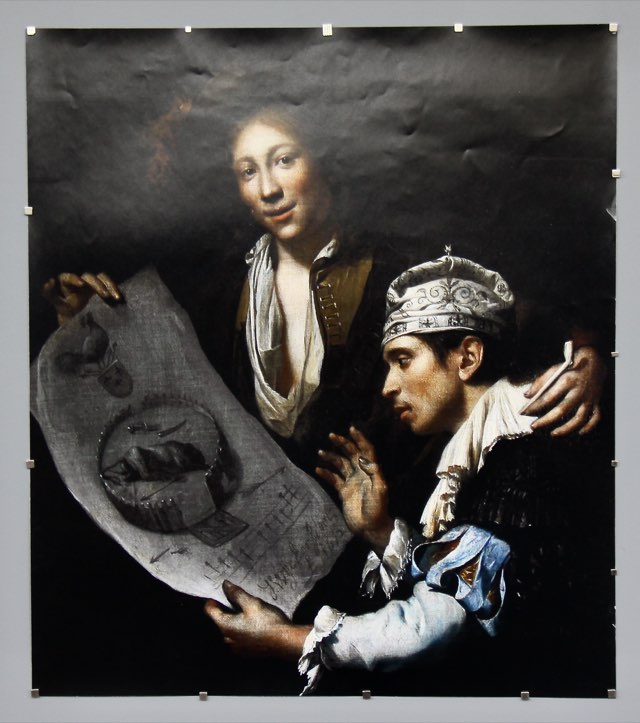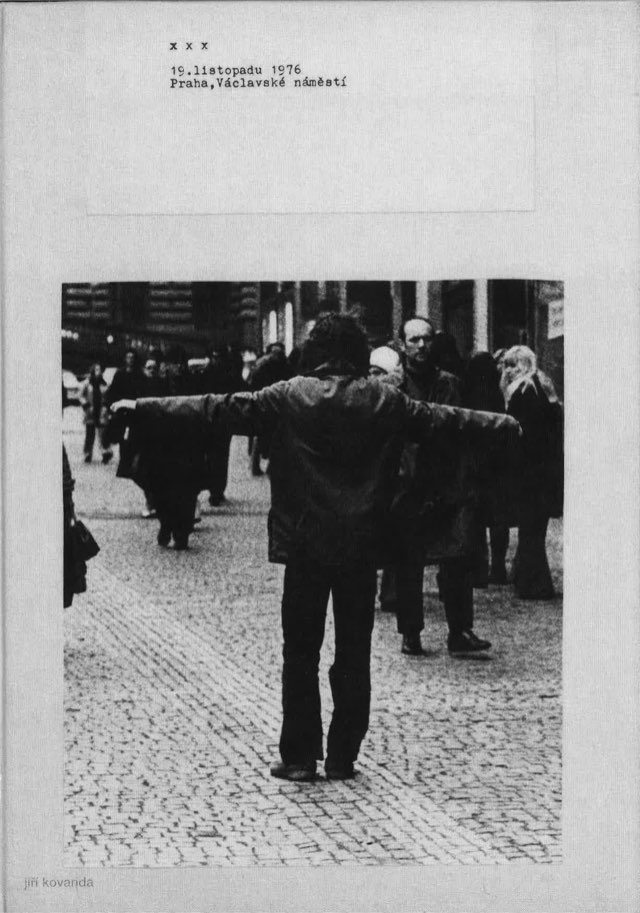SITUATIONS IN JANUARY 2007: Something Raw
22–28.01.2007
de Appel, Nieuwe Spiegelstraat 10, Amsterdam
de Appel, Nieuwe Spiegelstraat 10, Amsterdam

"Jiri Kovanda vs. The Rest of the World"
by Jiri Kovanda
"Movement Event for de Appel, 2007"
by Nora Heilmann and Aimar Pérez Galí
"Voyage of the White Widow"
by My Barbarian (Malik Gaines, Jade Gordon, Alex Segade, Andy Ouchi)
22 - 28 January 2007
During the whole of 2007, de Appel will produce and present 'Situations', consisting of a series of 'performances' given at regular intervals by a variety of performers - ranging from visual artists to choreographers and writers - who will examine the notion of the 'live moment'.
SITUATIONS IN JANUARY 2007:
SOMETHING RAW
In collaboration with Something RAW, Amsterdam's international Dance & Performance festival, held jointly by Theater Frascati and Vlaams Cultuurhuis De Brakke Grond (cultural centre), de Appel presents new, site-specific productions.
The performance week opens on 22 January 2007 with Jiri Kovanda Versus The Rest Of The World, an 'intervention' and exhibition conceived by the artist Jiri Kovanda (Prague, 1953) in collaboration with the curatorial trio Work Method (Marie Cantos, Guillaume Desanges and Francois Piron).
Kovanda entered the art scene in the late 1970s, at the same time as the second generation of Czech 'actionists'. His ephemeral and minimal actions were remarkable for their subtlety and conceptual refinement, being nearly indistinguishable from banal, everyday activities. Kovanda bumped into passers-by, for example, or waited for the telephone to ring, or tried to meet girls in the street, and so on. His 'interventions' could be read as gestures both political and poetic, which questioned the place of the individual in public areas. Even though these actions were prompted by the spirit of the times, they were not merely reactions to the then repressive climate of Eastern Europe. This exhibition puts Kovanda's work in a new and surprising setting. Each work is surrounded by a web of associations and ideas, spun with the help of photocopied documents, ranging from reproductions of art works to press photos and film stills, which function as visual echoes or intuitive formal links. The exhibition, recently shown at the GB Agency Gallery, Paris (September 2006), will be revised for this occasion.
On 23, 24 and 25 January the exhibition space will be occupied by Nora Heilmann and Aimar Pérez Galí's Movement Event for de Appel, 2007. Heilmann (Leipzig, 1976) rounded off her studies in 2001 at the School for New Dance Development Amsterdam (SNDO), since which time she has been working in the grey area between experimental choreography, improvisation and site-specific performances.
For her 'movements' at de Appel, Nora is collaborating with Aimar Pérez Galí to create a reservoir of movement material arising from a 'translocational situation'. In recent months, both performers have been staying in various cities, storing up material independently of one another. During this time they have communicated only indirectly, giving each other assignments and reporting to each other via e-mail and a web log (http://ruptures.wordpress.com). They have examined the same principles, but the distance between them lends their respective results a difference in form and tone. Two weeks before their première in de Appel, they will meet in the exhibition space and compose - while soaking up the architecture and the history of the place - a new 'movement'. The genesis of this work, emerging along a roundabout route paved by technological aids, will be shown in an archival presentation running parallel to the performance.
On 26 and 27 January the LA-based performance collective My Barbarian (Malik Gaines, Jade Gordon, Alex Segade, Andy Ouchi) will close the week with a performance of Voyage of the White Widow, a site-specific spectacle developed for de Appel. Since its founding in 2000, the exuberant group My Barbarian has created a furore, presenting unusual shows with a high camp and rock content. Drawing upon the canon of Western culture and history, they explore the meaning and aesthetics of contemporary mass culture.
Voyage of the White Widow may be interpreted as a 'play' of the kind described by the Dutch historian Johan Huizinga in his influential publication Homo Ludens (1938). A number of 'sailor personages', the crew of a nameless ship, express through play-acting and song their attitude towards a patchwork of historical events. They refer both to the Dutch Year of Catastrophe (1672) and to what My Barbarian calls the recent 'Catastrophic Years' in the United States. In this way the troupe seeks to de- and remythologise the consequences of European colonial expansion, economic phenomena such as the trade in marihuana, ecological disasters past and present, such processes as immigration and tourism, and the value, both artistic and monetary, of Dutch art of the Golden Age. Against a backdrop featuring Jan van Wijckersloot's Allegory of the French Invasion of the Netherlands in 1672 (1672) and Willem van de Velde's Gust of Wind (1650) - from the collection of the Rijksmuseum - the performers present themselves as 'fools', facetiously commenting on numerous historical and present-day trends and events.
by Jiri Kovanda
"Movement Event for de Appel, 2007"
by Nora Heilmann and Aimar Pérez Galí
"Voyage of the White Widow"
by My Barbarian (Malik Gaines, Jade Gordon, Alex Segade, Andy Ouchi)
22 - 28 January 2007
During the whole of 2007, de Appel will produce and present 'Situations', consisting of a series of 'performances' given at regular intervals by a variety of performers - ranging from visual artists to choreographers and writers - who will examine the notion of the 'live moment'.
SITUATIONS IN JANUARY 2007:
SOMETHING RAW
In collaboration with Something RAW, Amsterdam's international Dance & Performance festival, held jointly by Theater Frascati and Vlaams Cultuurhuis De Brakke Grond (cultural centre), de Appel presents new, site-specific productions.
The performance week opens on 22 January 2007 with Jiri Kovanda Versus The Rest Of The World, an 'intervention' and exhibition conceived by the artist Jiri Kovanda (Prague, 1953) in collaboration with the curatorial trio Work Method (Marie Cantos, Guillaume Desanges and Francois Piron).
Kovanda entered the art scene in the late 1970s, at the same time as the second generation of Czech 'actionists'. His ephemeral and minimal actions were remarkable for their subtlety and conceptual refinement, being nearly indistinguishable from banal, everyday activities. Kovanda bumped into passers-by, for example, or waited for the telephone to ring, or tried to meet girls in the street, and so on. His 'interventions' could be read as gestures both political and poetic, which questioned the place of the individual in public areas. Even though these actions were prompted by the spirit of the times, they were not merely reactions to the then repressive climate of Eastern Europe. This exhibition puts Kovanda's work in a new and surprising setting. Each work is surrounded by a web of associations and ideas, spun with the help of photocopied documents, ranging from reproductions of art works to press photos and film stills, which function as visual echoes or intuitive formal links. The exhibition, recently shown at the GB Agency Gallery, Paris (September 2006), will be revised for this occasion.
On 23, 24 and 25 January the exhibition space will be occupied by Nora Heilmann and Aimar Pérez Galí's Movement Event for de Appel, 2007. Heilmann (Leipzig, 1976) rounded off her studies in 2001 at the School for New Dance Development Amsterdam (SNDO), since which time she has been working in the grey area between experimental choreography, improvisation and site-specific performances.
For her 'movements' at de Appel, Nora is collaborating with Aimar Pérez Galí to create a reservoir of movement material arising from a 'translocational situation'. In recent months, both performers have been staying in various cities, storing up material independently of one another. During this time they have communicated only indirectly, giving each other assignments and reporting to each other via e-mail and a web log (http://ruptures.wordpress.com). They have examined the same principles, but the distance between them lends their respective results a difference in form and tone. Two weeks before their première in de Appel, they will meet in the exhibition space and compose - while soaking up the architecture and the history of the place - a new 'movement'. The genesis of this work, emerging along a roundabout route paved by technological aids, will be shown in an archival presentation running parallel to the performance.
On 26 and 27 January the LA-based performance collective My Barbarian (Malik Gaines, Jade Gordon, Alex Segade, Andy Ouchi) will close the week with a performance of Voyage of the White Widow, a site-specific spectacle developed for de Appel. Since its founding in 2000, the exuberant group My Barbarian has created a furore, presenting unusual shows with a high camp and rock content. Drawing upon the canon of Western culture and history, they explore the meaning and aesthetics of contemporary mass culture.
Voyage of the White Widow may be interpreted as a 'play' of the kind described by the Dutch historian Johan Huizinga in his influential publication Homo Ludens (1938). A number of 'sailor personages', the crew of a nameless ship, express through play-acting and song their attitude towards a patchwork of historical events. They refer both to the Dutch Year of Catastrophe (1672) and to what My Barbarian calls the recent 'Catastrophic Years' in the United States. In this way the troupe seeks to de- and remythologise the consequences of European colonial expansion, economic phenomena such as the trade in marihuana, ecological disasters past and present, such processes as immigration and tourism, and the value, both artistic and monetary, of Dutch art of the Golden Age. Against a backdrop featuring Jan van Wijckersloot's Allegory of the French Invasion of the Netherlands in 1672 (1672) and Willem van de Velde's Gust of Wind (1650) - from the collection of the Rijksmuseum - the performers present themselves as 'fools', facetiously commenting on numerous historical and present-day trends and events.
My Barbarian – Voyage of the White Widow, 2007 – Leftover props Something Raw
collection (unintended), 2007



